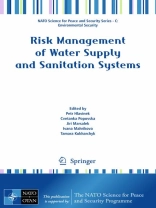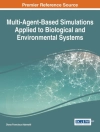Each year more than 200 million people are affected by floods, tropical storms, droughts, earthquakes, and also operational failures, wars, terrorism, vandalism, and accidents involving hazardous materials. These are part of the wide variety of events that cause death, injury, and significant economic losses for the countries affected.
In an environment where natural hazards are present, local actions are decisive in all stages of risk management: in the work of prevention and mitigation, in rehabilitation and reconstruction, and above all in emergency response and the provision of basic services to the affected population. Commitment to systematic vulnerability reduction is crucial to ensure the resilience of communities and populations to the impact of natural and manmade hazards.
Current challenges for the water and sanitation sector require an increase in sustainable access to water and sanitation services in residential areas, where natural hazards pose the greatest risk. In settlements located on unstable and risk-prone land there is growing environmental degradation coupled with extreme conditions of poverty that increase vulnerability. The development of local capacity and risk management play vital roles in obtaining sustainability of water and sanitation systems as well as for the communities themselves.
Unfortunately water may also represent a potential target for terrorist activity or war conflict and a deliberate contamination of water is a potential public health threat. An approach which considers the needs of communities and institutions is particularly important in urban areas affected by armed conflict. Risk management for large rehabilitation projects has to deal with major changes caused by conflict: damaged or destroyed infrastructure, increased population, corrupt or inefficient water utilities, and impoverished communities.
Water supply and sanitation are amongst the first considerations in disaster response. The greatest water-borne risk to health in most emergencies is the transmission of faecal pathogens, due to inadequate sanitation, hygiene and protection of water sources. However, some disasters, including those involving damage to chemical and nuclear industrial installations, or involving volcanic activity, may create acute problems from chemical or radiological water pollution. Sanitation includes safe excreta disposal, drainage of wastewater and rainwater, solid waste disposal and vector control.
This book is based on the discussions and papers prepared for the NATO Advanced Research Workshop that took place in Ohrid, Macedonia under the auspices of the NATO Security Through Science Programme and addressed problems Risk management of water supply and sanitation systems impaired by operational failures, natural disasters and war conflicts.
The main purpose of the workshop was to critically assess the existing knowledge on Risk management of water supply and sanitation systems, with respect to diverse conditions in participating countries, and promote close co-operation among scientists with different professional experience from different countries.
The ARW technical program comprised papers on 4 topics, : (a) Vulnerability of Wastewater and Sanitation Systems, (b) Vulnerability of Drinking Water Systems, (c) Emergency response plans, and (d) Case studies from regions affected by Drinking Water System, Wastewater and Sanitation System failures.
Table des matières
Preface.- Acknowledgement.- List of Contributors.- Vulnerability of Wastewater and Sanitations Systems.- Hazards, Vulnerability And Mitigation Measures Of Water Supply And Sewerage Systems; P. Hlavinek.- Sewer System Management In Extraordinary Events; D. Ljubisavljevic, A. Randjelovic.- Risk And Uncertainty Assessment Of Urban Drainage Networks; R. Arsov And T. Igneva-Danova.- Waste Water From Small Urban Areas-Impact Of Environment In Slovakia; I. Mahríková.- Financial Network Reconstruction Plan; D. Moran.- Influence Of Sewages From The Industrial Zone Of Uranium Production On The State Of The Water Objects; B. Kornilovych Et Al.- Risk Analysis Of Sewer System Operational Failures Caused By Unstable Subsoil; K. Kríž et al.- Risk And Vulnerability Assessment (‘Ros-Analysis’) Of The Bergen Water Supply System – A Source To Tap Approach; J. Røstum Et Al.- Vulnerability of Drinking Water Systems.- Drinking Water Security: Municipal Strategies; J. Marsalek.- Flood Risk Assessment Of Urban Areas; C. Popovska, D. Ivanoski.- Economic And Technical Efficiency Of Drinking Water Systems: An Empirical Approach For Spain; F. Hernandez Sancho et al.- Occurrence And Consequences Of Disinfection By-Products In Drinking Waters As Related To Water Shortage Problems In Istanbul Metropolitan City; M. Bekbolet.- Drinking Water System Of Chernivtsi: Current Condition, Vulnerability Assessment And Possible Ways Of Threat Mitigation; I. Winkler And A. Choban.- Emergency Response Plans.- Water Safety Plans In Disaster Management: Appropriate Risk Management Of Water, Sanitation And Hygiene In The Context Of Rural And Peri-Urban Communities In Low-Income Countries; J. Webster et al.- Online Monitoring Technologies For Drinking Water Systems Security; A. G. Capodaglio, A. Callegari.- The Use Of Data-Driven Methodologies For Prediction Of Water And Wastewater Asset Failures; D. A. Savic.- Proactive Crisis Management Of Urban Infrastructureexecutive Summary Of The Cost Action C19; J.Røstum.- Water Pollution Impact On Immune Status Of Human Organism And Typical Epidemic Processes: Mathematic Model, Obtaining Results, Their Analysis And Proposals To Manage Risk Factors; B. Skip.- Risk Assessment Of Coastal Pollution With Random Water Currents; J. Ganoulis.- Case Studies from Regions Affected by Drinking Water Systems, Wastewater and Sanitations System Failures.- Vulnerability Of The Drinking Water Supplies Of Istanbul Metropolitan City: Current Status And Future Prospects; C. S. Uyguner.- Consequences Of Non Planned Urban Development During Turbulent Times In Serbia – Case Study Of Suburb Kumodraz Watershed In Belgrade; J. Despotovic et al.- Reuse Of Waste Waters In Slovakia, Water Supply Sustainaibility; Š. Stanko.- Examples Of Risk Management In Flanders For Large Scale Groundwater Contamination; I. Van Keer et al.-Environmental Benefits Of Wastewater Treatment: An Economic Valuation; F. Hernandez Sancho et al.- Poster Section.- Anoxic Granulation Of Activated Sludge; P. Pagacova et al.- Drinking Water Supply In Belarus: Sources, Quality And Safety; T. Kukharchyk, V. Khomich.- Operation Of Household Mbr Wwtp – Operational Failures; T. Pikorova et al.- Perspective Of Decentralized Sanitation Concept For Treatment Of Wastewater In The Czech Republic; T. Sklenarova.- Xenobiotics In Process Of Wastewater Treatment – Web Knowledge Base; J. Kubik.- Hydraulic And Environmental Reliability Model Of Urban Drainage; P. Hlavinek et al.- Subject Index.-












